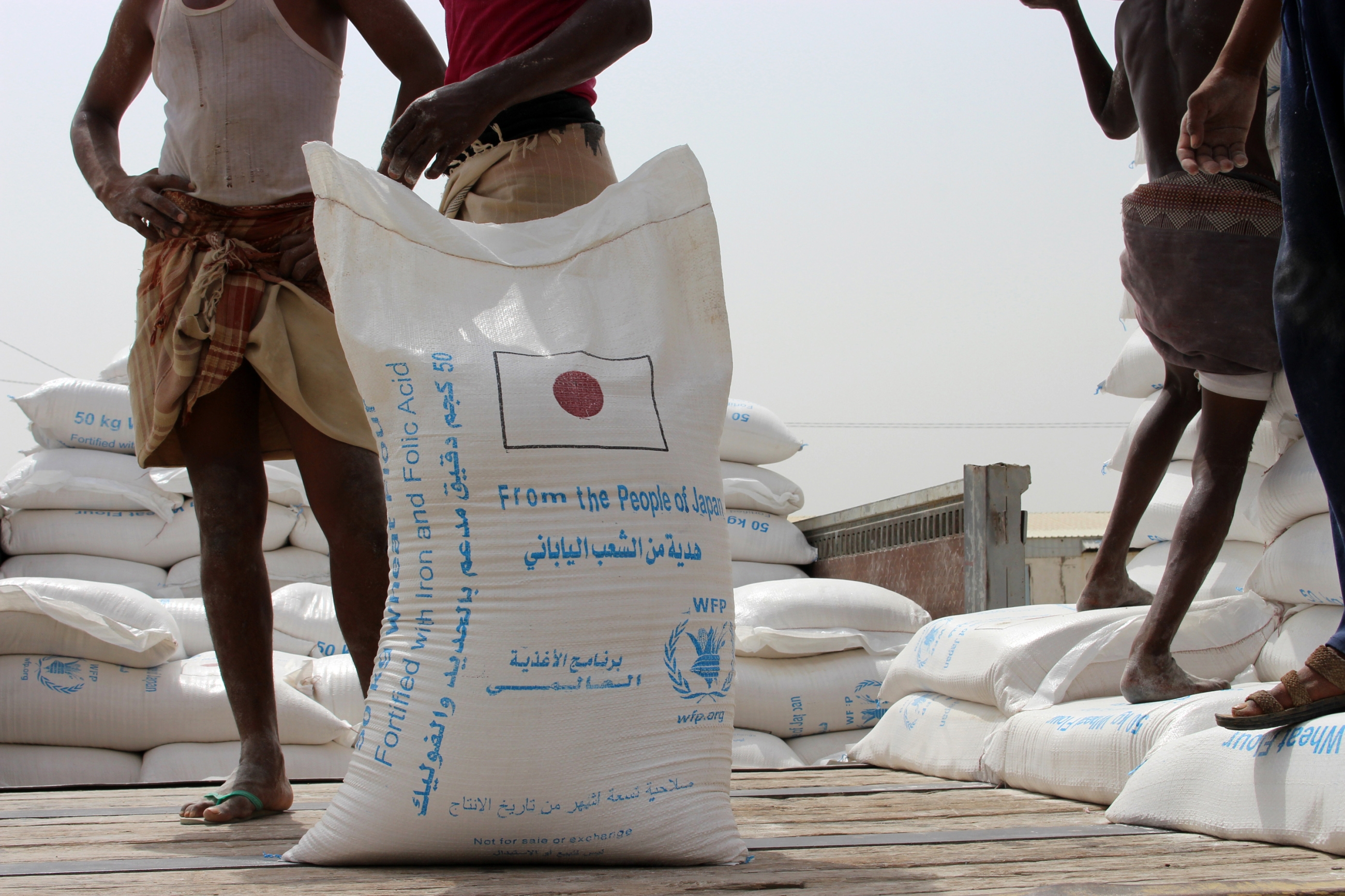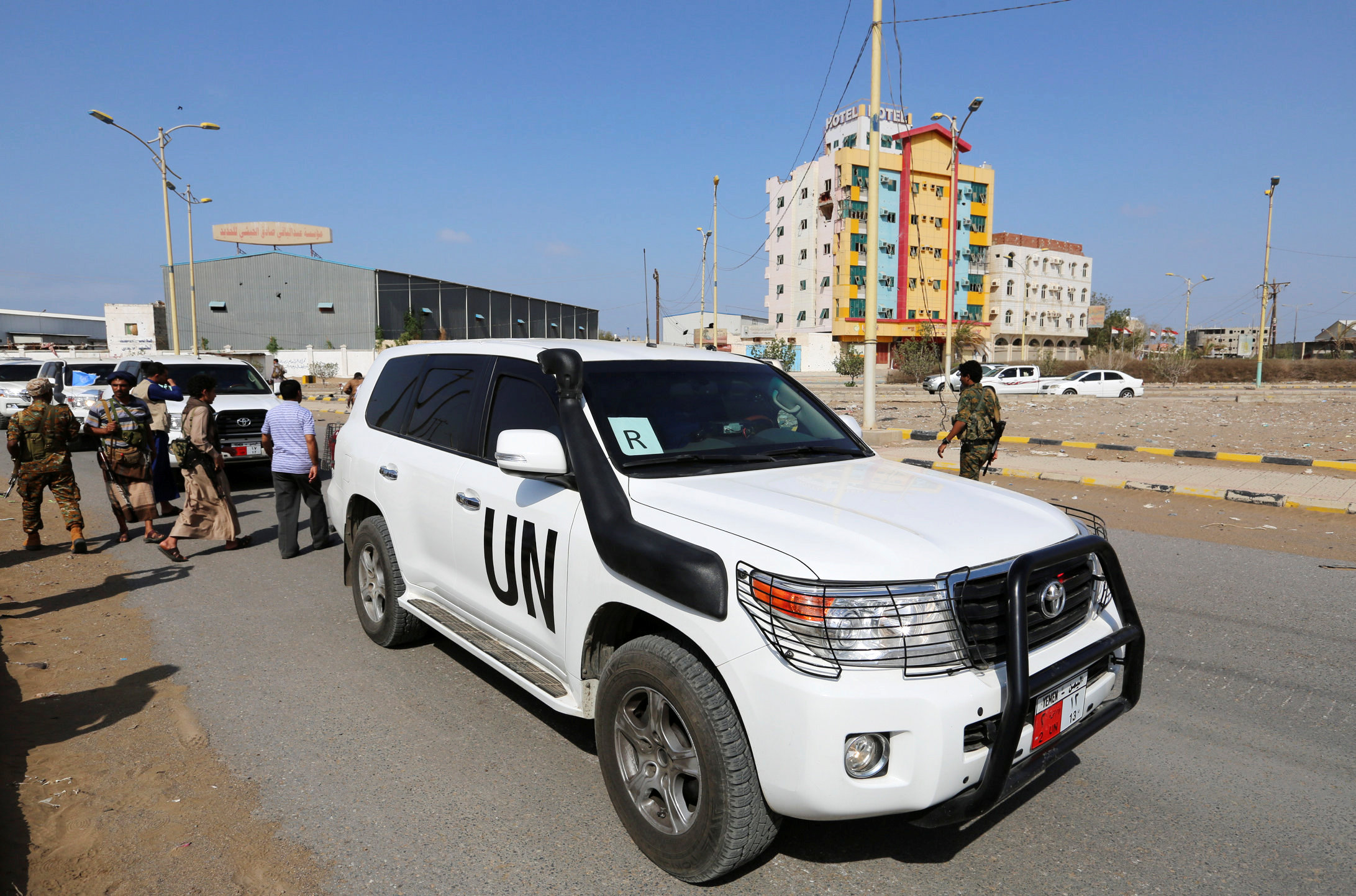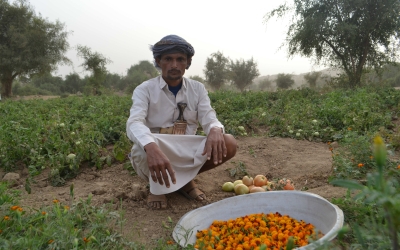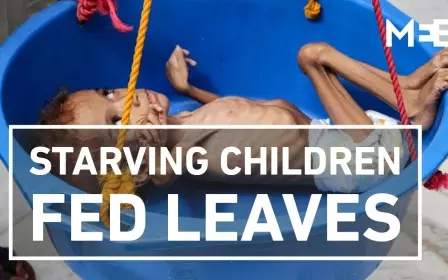EXCLUSIVE: Hodeidah grain declared fit to eat in lifeline to starving Yemenis

First it was inaccessible, then it appeared to be rotten. But on Wednesday the United Nations confirmed to Middle East Eye that much of the vital grain stored in Yemen’s Hodeidah is fit to eat, a lifeline for starving Yemenis.
Grain silos in the Red Sea port city were inaccessible to the UN’s World Food Programme (WFP) from September to February, just as eight million Yemenis were being pushed to the brink of famine.
A pro-Yemeni government assault on Houthi rebels-held Hodeidah, the gateway for some 70 percent of humanitarian aid, had plunged the country into further crisis and cut the grain stores from the UN.
Once the agency gained access to the silos, however, hopes were raised that the 51,000 tonnes of wheat may be released for consumption by Hodeidah’s starving population.
Yet soon after, reports emerged that the wheat, which constitutes one-quarter of WFP’s in-country stock, was infected by weevils and rotten.
New MEE newsletter: Jerusalem Dispatch
Sign up to get the latest insights and analysis on Israel-Palestine, alongside Turkey Unpacked and other MEE newsletters
'We anticipate the flour yield will be slightly lower than normal'
- WFP
Following testing, those reports appear correct, though much of the wheat is salvageable.
"WFP carried out a full assessment of the condition of the wheat and laboratory tests confirmed it was infested with insects, which has resulted in some hollow grains,” one of the agency’s spokespeople, who preferred not to be named, told MEE.
“The wheat needs to be fumigated before it can be milled into flour. We anticipate the flour yield will be slightly lower than normal due to the hollow grains that will be sifted out during the milling process.”
According to the spokesperson, the grain stored in the Hodeidah silos when WFP lost access in September was enough to feed 3.7 million people for one month.
“At this stage, we cannot confirm how much flour we will be able to get from the wheat at the Red Sea Mills,” the spokesperson conceded.
Now WFP is awaiting clearance from local authorities to begin fumigating the wheat and milling it to make it fit for consumption.
A lifeline
Nasr Abdul Hamid, a father of six living in Hodeidah’s Ghulail neighbourhood, lost his job as a fisherman when Yemen’s war broke out in 2015, and he is now one of 22 million Yemenis dependent on food aid.
“Aid organisations are playing a major role in helping needy people in Hodeidah, and if not for them, we would have died,” he told MEE.
“During recent months, we heard that huge quantities of food in the silos were rotten, which was bad news for us as we may not have been able to find aid in future. But today I am happy to know that the food is still useable.”
Abdul Hamid struggles every day for food, though he just about manages to feed his children.
“Sometimes we do not find enough food, but we prioritise the children and this is the most important thing for us,” he said.
“We hope to receive the WFP’s wheat before it expires and I trust the WFP is doing its best to help us.”
WFP currently manages to deliver aid to some 10 million Yemenis a month, though this year the UN agency is seeking to increase that to 12 million.
Around 2 million Yemeni children suffer from malnutrition.
Last year, Save the Children estimated that 85,000 children under five had died from acute malnutrition since a Saudi-led coalition entered the conflict on the government's behalf in 2015.
Middle East Eye delivers independent and unrivalled coverage and analysis of the Middle East, North Africa and beyond. To learn more about republishing this content and the associated fees, please fill out this form. More about MEE can be found here.






